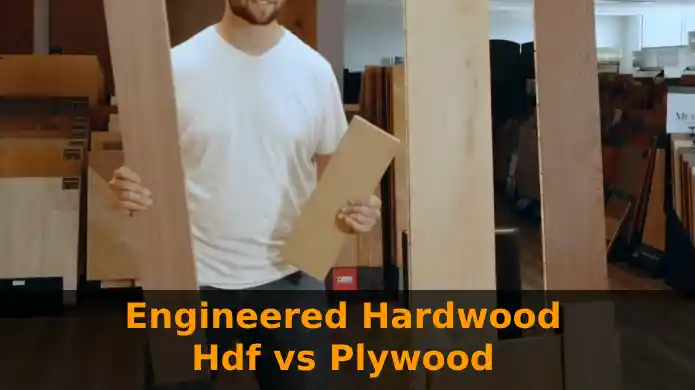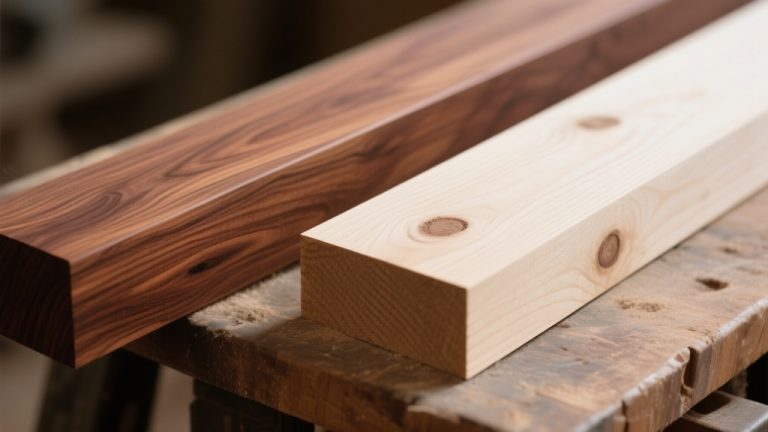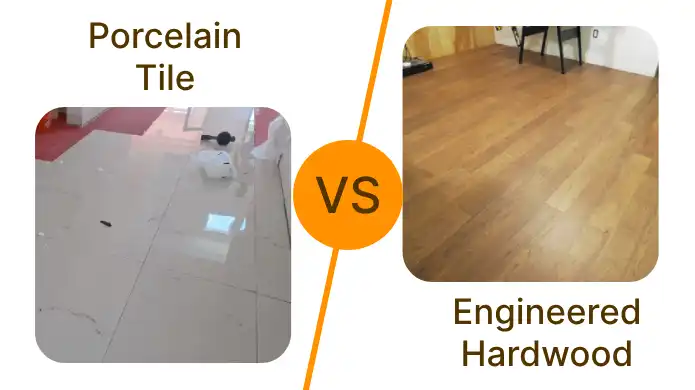Engineered Hardwood Hdf vs Plywood: 6 Differences
Are you in the market for new flooring but feeling overwhelmed by the many options available? Two popular choices for engineered hardwood flooring are HDF and plywood. Both have their unique advantages and disadvantages, but understanding the differences can help you make an informed decision.
HDF, or high-density fiberboard, is an engineered wood product made from compressed wood fibers and resin. It is known for its durability and resistance to moisture, making it an excellent option for areas prone to high humidity or spills.
On the other hand, plywood is made by gluing together thin layers of wood veneer, creating a strong and stable surface. While both HDF and plywood can be used as a base for engineered hardwood flooring, they differ in strength, durability, and cost.
Here, we will discuss the differences between HDF and plywood and help you determine which option may be the best fit for your flooring needs.
The Differences Between Engineered Hardwood HDF vs Plywood

If you’re considering engineered hardwood flooring, it’s important to understand the differences between HDF and plywood. Here are some of the main differences between HDF and plywood:
- No 01: Composition
- No 02: Stability
- No 03: Moisture Resistance
- No 04: Durability
- No 05: Installation
- No 06: Cost
No 01: Composition
The composition of HDF and plywood in engineered hardwood flooring differs in their density and construction.
HDF, or high-density fiberboard, is a dense and uniform material made from wood fibers and resin binders under high pressure and temperature. It has a density of around 50-65 pounds per cubic foot, making it an incredibly strong and stable option for engineered hardwood flooring.
On the other hand, plywood consists of thin layers or plies of wood veneer that are glued together with their grain directions alternating. This cross-grain construction enhances strength and stability, but the density of plywood used in engineered hardwood flooring is around 35-45 pounds per cubic foot, which is lower than HDF.
Despite the difference in density, plywood is still a durable and reliable option for engineered hardwood flooring. Its construction allows for natural expansion and contraction due to changes in humidity.
No 02: Stability
You’ll notice that HDF engineered hardwood flooring is more stable than plywood due to its high density and uniform composition. This stability is important for the longevity of your floors, as it allows them to resist expansion and contraction caused by changes in moisture and temperature.
In contrast, plywood may be less stable due to gaps between the layers and variations in the quality of the plies. When choosing between HDF and plywood, stability is an important consideration.
No 03: Moisture Resistance
Imagine never having to worry about your floors warping or buckling due to moisture. With HDF engineered hardwood, this dream can become a reality.
HDF, or high-density fiberboard, has a dense structure that makes it highly resistant to moisture. Unlike plywood, HDF won’t swell or warp when exposed to moisture, making it an ideal choice for areas with high humidity or frequent water exposure.
In contrast, plywood is prone to moisture absorption, which can cause it to warp or delaminate. This can be a major issue in areas like bathrooms or kitchens, where water exposure is common.
No 04: Durability
Regarding durability, HDF is a top choice due to its dense composition that makes it highly resistant to impacts and heavy foot traffic. This makes it perfect for high-traffic areas such as hallways, living rooms, and kitchens.
Additionally, HDF is highly scratch-resistant, which means your engineered hardwood flooring can withstand the wear and tear of everyday use if you use it. Even if you have kids or pets at home, you don’t need to worry about your HDF flooring getting damaged easily.
On the other hand, plywood is also a durable option, but its durability can vary based on the quality of the plywood used. While it is slightly less resistant to denting and scratching than HDF, high-quality plywood options can offer similar durability.
It is important to note that plywood is still a strong flooring option and can last many years with proper maintenance.
No 05: Installation
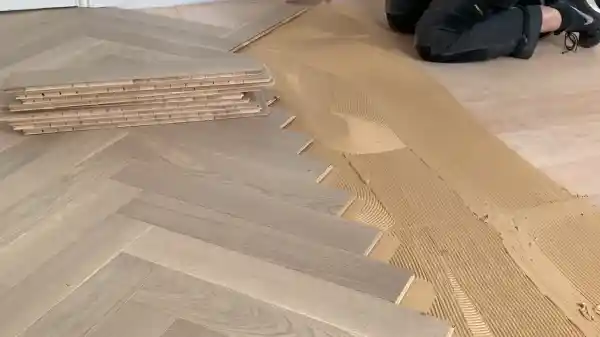
Installing your new engineered hardwood flooring is a breeze with the click-lock or tongue-and-groove system. HDF core-engineered hardwood is designed to make installation easy. This type of flooring requires minimal adhesive or nails to secure the planks in place.
The click-lock system allows you to simply snap the planks together, while the tongue-and-groove system requires a little more effort to line up the planks, but it’s still relatively easy to install.
Plywood core engineered hardwood can also be installed as a floating floor or glued down, but it may require more nails or adhesive to secure the planks properly.
This type of flooring can be a little more difficult to install due to the extra work required to secure the planks in place. Gluing down the planks may be a more secure installation method, but it requires a higher level of skill and experience.
No 06: Cost
One option stands out regarding affordability between these two types of engineered flooring. HDF-cored options are generally more affordable than plywood-cored options because the HDF material is less expensive than plywood. This makes HDF-core engineered hardwood a popular choice for those on a budget.
The project’s overall cost will depend on various factors, including the size of the space, the type of flooring selected, and the cost of installation.
Comparison Table between Engineered Hardwood HDF and Plywood
| Criteria | Engineered Hardwood HDF | Engineered Hardwood Plywood |
| Composition | High-density fiberboard | Plywood |
| Density | 50-65 pcf | 35-45 pcf |
| Stability | Excellent | Good |
| Moisture Resistance | Better | Susceptible |
| Durability | Highly durable | Durable |
| Cost | More affordable | Slightly more expensive |
Pros and Cons of Engineered Hardwood HDF and Plywood
Whether you choose engineered hardwood HDF or plywood, it is important to consider the various pros and cons of each.
- Engineered Hardwood HDF
Pros:
- Stability: HDF is highly stable and less prone to expansion and contraction compared to other core materials. This stability makes it suitable for areas with fluctuating humidity levels.
- Smooth Surface: HDF provides a consistent, smooth surface that is ideal for a flawless finish, especially when installing laminate or veneer flooring.
- Affordability: HDF is generally more cost-effective than plywood, making it a budget-friendly option for homeowners.
- Eco-Friendly: HDF is often made from recycled wood fibers, making it an environmentally friendly choice.
Cons:
- Moisture Sensitivity: While HDF is more stable than some other materials, moisture can still affect it. Excessive exposure to water or high humidity levels can cause swelling and damage to the flooring.
- Limited Thickness Options: HDF is typically available in thinner options, which may limit its suitability for certain applications.
- Engineered Hardwood Plywood
Pros:
- Moisture Resistance: Plywood is inherently more moisture-resistant than HDF. It has better resistance to water damage and can withstand humidity changes more effectively.
- Structural Stability: Plywood is structurally stronger than HDF, making it suitable for heavy foot traffic areas or installations that require more durability.
- Versatility: Plywood can be used as a core material for various types of engineered hardwood, including solid wood veneers, giving you a wider range of design options.
Cons:
- Cost: Plywood is generally more expensive than HDF due to its higher quality and enhanced durability.
- Surface Imperfections: The surface of plywood may have visible imperfections, such as wood grain patterns or patches, which can affect the overall appearance of the finished flooring.
- Susceptible to Warping: Although plywood is less prone to warping than solid wood, it can still be affected by moisture and humidity over time.
How strong is HDF compared to plywood?
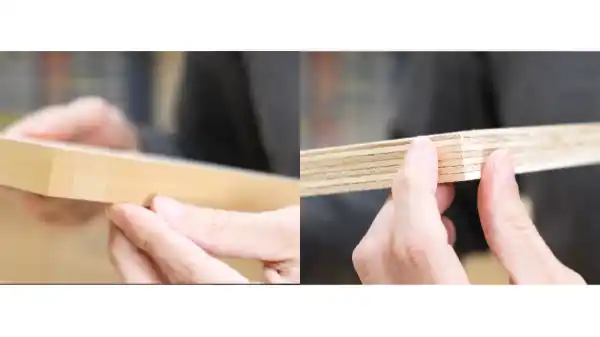
You’ll be impressed that HDF, or high-density fibreboard, is significantly stronger than plywood regarding screw strength.
HDF has 10 times more screw strength than other boards and plywood. This is due to the high density and uniform composition of HDF, which allows screws to grip the material more effectively.
In addition to its superior screw strength, HDF also has higher impact resistance than plywood. This means it’s less likely to dent or crack under pressure, making it a more durable option for flooring and other applications.
Which is better: HDF or plywood?
Consider the benefits of using high-density fibreboard (HDF) over plain plywood for the best boards in your build.
HDF has a higher density and strength than plywood, making it more durable and damage-resistant. Additionally, HDF is less likely to warp or expand due to changes in temperature and humidity, making it a reliable choice for heavy-duty spaces.
Engineered Hardwood HDF or Plywood: Durable and Moisture-Resistant Choices
The choice between HDF and plywood for engineered hardwood ultimately relies on matching one’s specific requirements. Saving you time and effort, HDF is perfect for high-traffic areas and homes with pets due to its durability and moisture-resistant properties.
It is noteworthy that HDF scores better in density when compared with plywood, weighing on average 50 pounds per cubic foot, thereby avoiding dings and scratches caused by heavy furniture or foot traffic. HDF also boasts higher dimensional stability, making it immune to changes in temperature and humidity.
Evaluating the benefits and limitations of both materials before concluding is imperative. Nonetheless, HDF is an excellent pick if you desire enduring and steadfast engineered hardwood flooring, as verified by its high density and dimensional stability – a dependable solution for any household.

